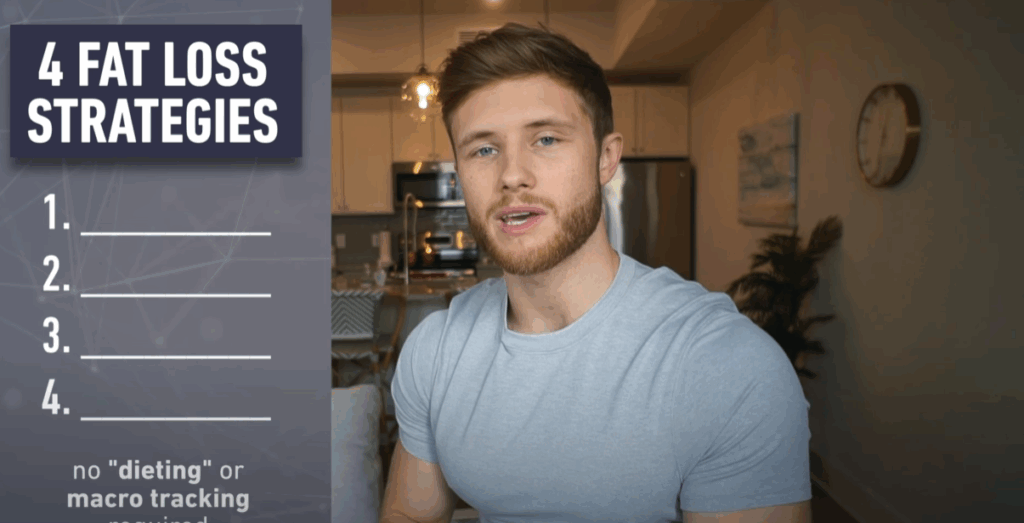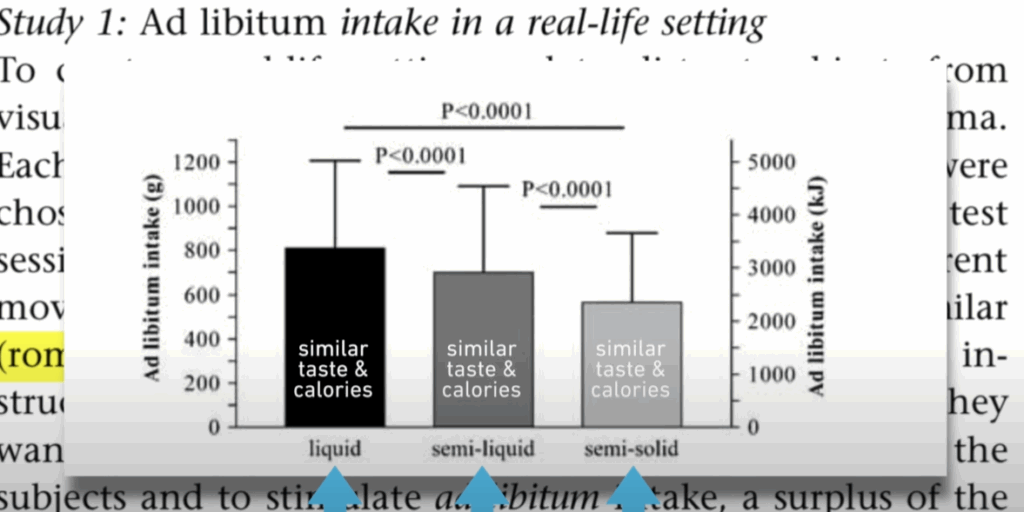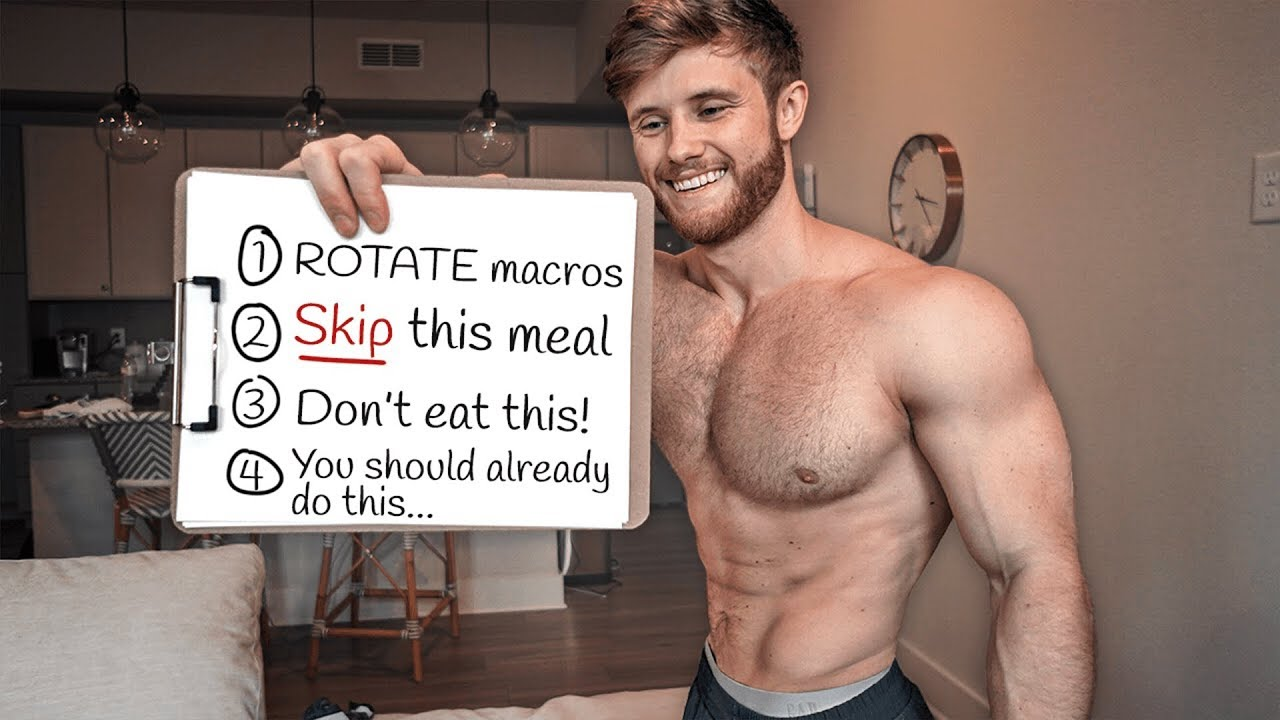Every January, millions of people set ambitious fat loss goals, only to give up within weeks. Research from the University of Scranton revealed that while 77% of people stick to their New Year’s resolutions during the first week, that number drops to just 55% after one month. After two years? Only 19% are still on track.
The truth is, most diets fail not because people don’t know what to do, but because strict dieting is difficult to sustain. That’s why behavioral strategies—simple, sustainable changes to how you eat—are often more effective than obsessively tracking every calorie or macronutrient.
In this article, I’ll share four practical fat loss strategies that don’t require a rigid meal plan or macro tracking. These methods are based on science, decades of coaching experience, and a deep understanding of how behavior affects food intake.

The 3 Non-Negotiables of Fat Loss
Before diving into the strategies, let’s establish the fundamentals of body composition changes. Whether you follow keto, paleo, intermittent fasting, or any other popular diet, every successful fat loss plan has three things in common:
- You must be in a calorie deficit – consuming fewer calories than you burn.
- You need enough protein – adequate protein intake preserves lean muscle while dieting and supports muscle growth.
- You should lift weights – resistance training ensures you lose fat rather than muscle and helps maintain a toned, athletic look.
A massive meta-analysis from 2014 reviewing 48 randomized trials compared popular diets such as Atkins, South Beach, and Jenny Craig. The researchers concluded that the specific diet mattered far less than adherence. Simply put, the best diet is the one you can stick to long-term.
That said, sticking to a calorie deficit is easier said than done. Hunger, food cravings, and social eating habits often sabotage good intentions. That’s where the following strategies come in.
1. Rotate Carbs and Fats Between Meals
One of the simplest ways to reduce calorie intake without tracking is to separate carbs and fats at different meals. Here’s how it works:
- Meal 1: Protein + Carbs, minimal fat
- Meal 2: Protein + Fats, minimal carbs
- Meal 3: Protein + Carbs again
- Meal 4: Protein + Fats again
Why does this work? The most calorie-dense and hyper-palatable foods tend to combine both carbs and fats (think pizza, fries, pastries). Separating them makes meals less likely to trigger overeating.
There’s nothing “magical” about this method—it simply makes it harder to overconsume. Many of my clients find that within a week of trying this approach, their appetite naturally decreases, making it easier to stay in a deficit.
2. Try Time-Restricted Eating (But Be Flexible)
You don’t have to follow a strict intermittent fasting protocol to benefit from time-restricted eating. Simply shortening your daily eating window—by delaying breakfast or spacing out meals—can naturally reduce your daily calorie intake.
A 2018 pilot study had 23 obese adults limit eating to an 8-hour window (10 a.m. to 6 p.m.) without tracking calories or restricting food choices. After 12 weeks, participants lost around 3% of their body weight on average.
While the results aren’t dramatic, it’s impressive considering no formal dieting was involved. The key is to experiment—some people feel great skipping breakfast, while others overeat later if they fast too long. If you’re prone to late-night snacking, ending meals earlier in the day can be especially effective.

3. Eliminate or Minimize Liquid Calories
Liquid calories are one of the biggest hidden obstacles to fat loss. Sodas, fancy coffee drinks, fruit juices, and even smoothies can add hundreds of calories without providing much satiety.
A fascinating study tested how food texture influences calorie intake. Participants watched movies while consuming either a liquid, semi-liquid, or semi-solid chocolate drink. Despite identical calorie content, participants drank 30% more of the liquid version than the semi-solid.
This highlights how easy it is to overconsume when calories come in liquid form. If fat loss is your goal:
✅ Replace sugary drinks with water, sparkling water, or unsweetened tea.
✅ If you enjoy shakes, make them thicker with fibrous vegetables or frozen fruit to slow consumption.
Simply cutting out calorie-dense drinks can save you hundreds of calories per day.
4. Eat Out Less Frequently
Restaurant meals are notoriously high in calories, even when they seem healthy. A 2016 study analyzing restaurant meals in the U.S. found that the average dish contained 1,200 calories, with some exceeding 3,000.
What’s worse, people tend to underestimate the calories in restaurant meals, especially high-fat or high-carb options. Reducing how often you eat out—even by just one or two meals per week—can make a huge difference.
When you do eat out:
- Look for grilled or steamed options instead of fried.
- Ask for dressings or sauces on the side.
- Portion half your meal into a takeout container before you start eating.
Putting It All Together
None of these strategies are mandatory, but they work because they help you stay in a calorie deficit without feeling overly restricted. You can use one, two, or all four, depending on your lifestyle.

Quick Recap
✔ Alternate carbs and fats at meals to reduce hyper-palatable food combinations.
✔ Experiment with time-restricted eating to naturally eat fewer calories.
✔ Cut liquid calories to avoid mindless overconsumption.
✔ Reduce restaurant meals to better control portions and ingredients.
Remember, fat loss success doesn’t come from perfection—it comes from consistency. Combine these behavioral tools with high protein intake and weight training, and you’ll not only lose fat but maintain muscle, giving you the lean, defined look most people are chasing.
Final Words
Diets fail when they feel like punishment. The best fat loss approach is the one you can sustain while still enjoying life. Start small, apply one strategy at a time, and give yourself room to adjust as you go.
With patience and consistency, you can defy the discouraging statistics about failed resolutions and achieve the body composition you want—without obsessing over every macro.



